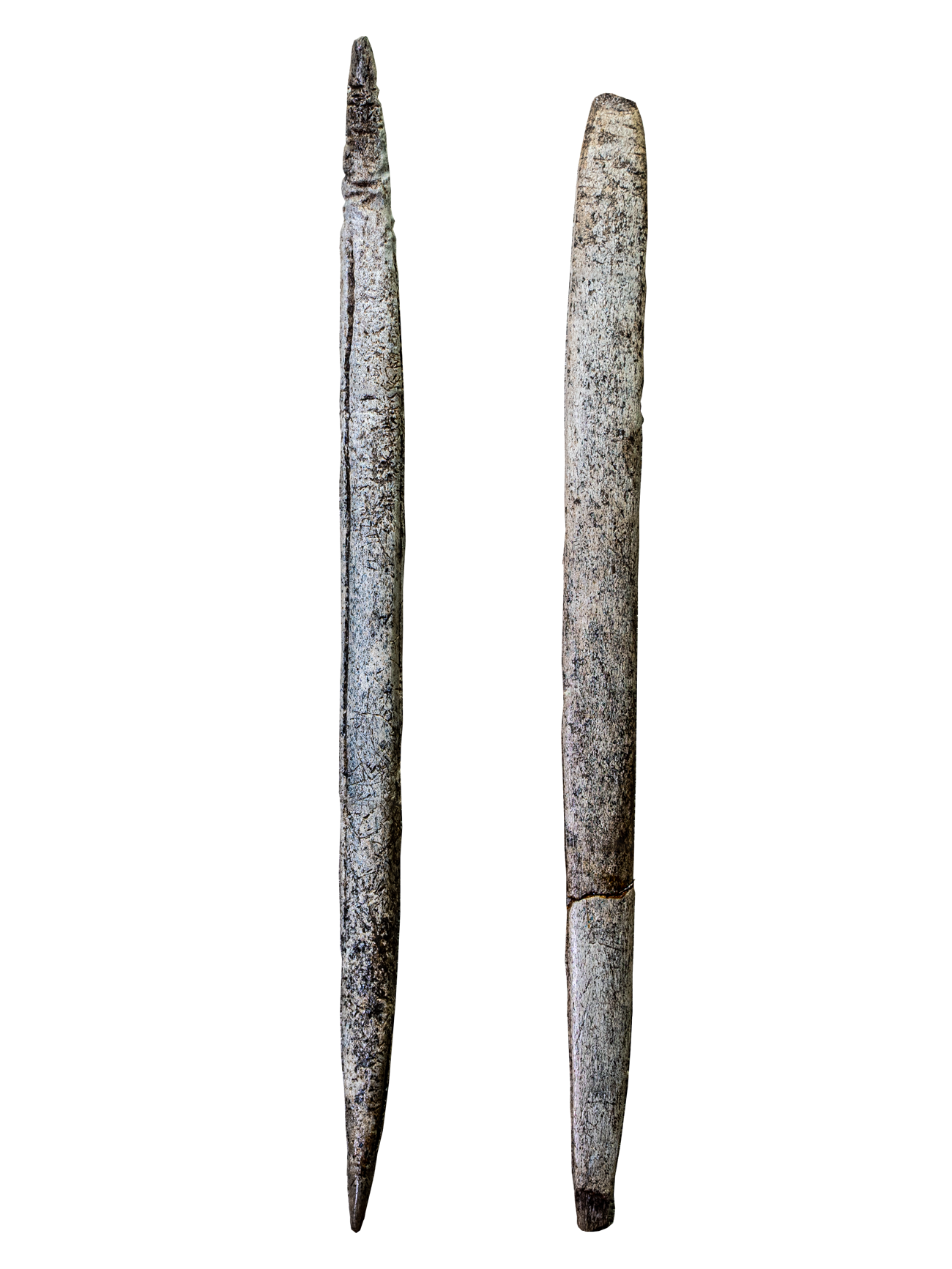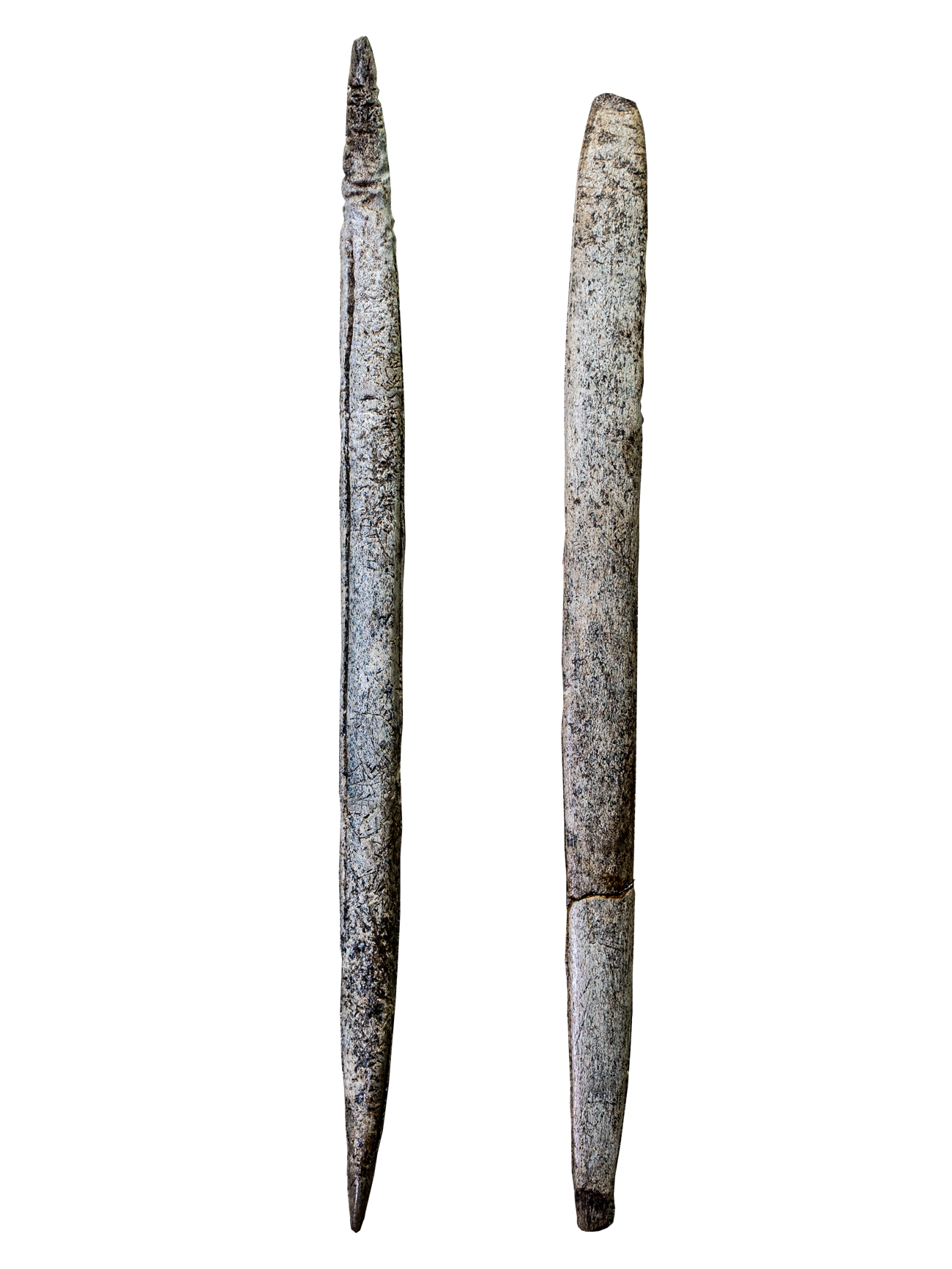Head of the javelin with side grooves


This tool made of mammoth tusk is a narrow rod of oval cross-section. Its ends are rather symmetrically sharpened. On one of them, on the stem, small cross-cuts are made, apparently for mounting it to the shaft. There are also cuts on the side of the base. These were probably necessary for a firmer grip of the head to the shaft.
Two shallow long grooves are cut along the sides of the rod. One runs along the entire length of the spearhead, the other breaks off near the stem.
Stone plates were inserted into the grooves and were apparently fixed with resin or some other adhesive substance. A number of such inserts formed a sharp blade, the length of which could be alternated and was limited only by the length of the weapon itself. When using a spear or javelin in hunting, the liners quickly broke and crumbled, but they could easily be replaced with new ones. The weapon is slightly curved from long stay in the soil, but in ancient times, the blanks for such weapons made of tusk were skillfully straightened and became absolutely straight.
Functional purpose: the head of a hurling weapon (a spear or javelin).
Notice of uniqueness: the spearhead is unique, because all finds of this kind are extremely rare.

